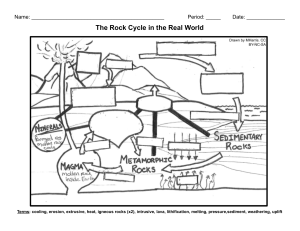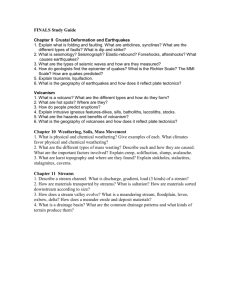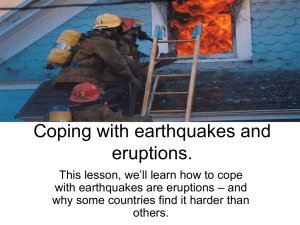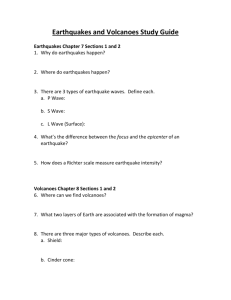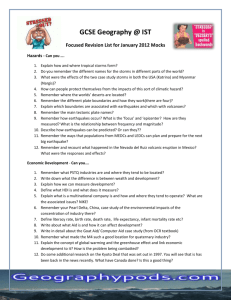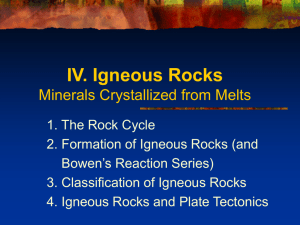Study guide for Midterm II
advertisement
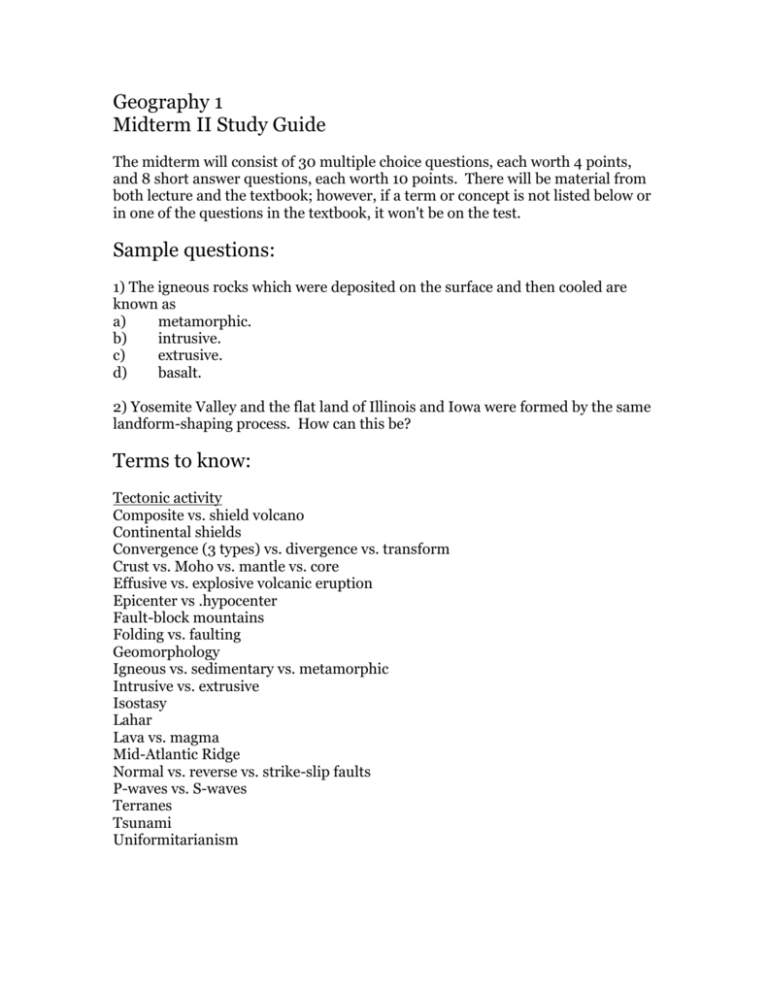
Geography 1 Midterm II Study Guide The midterm will consist of 30 multiple choice questions, each worth 4 points, and 8 short answer questions, each worth 10 points. There will be material from both lecture and the textbook; however, if a term or concept is not listed below or in one of the questions in the textbook, it won't be on the test. Sample questions: 1) The igneous rocks which were deposited on the surface and then cooled are known as a) metamorphic. b) intrusive. c) extrusive. d) basalt. 2) Yosemite Valley and the flat land of Illinois and Iowa were formed by the same landform-shaping process. How can this be? Terms to know: Tectonic activity Composite vs. shield volcano Continental shields Convergence (3 types) vs. divergence vs. transform Crust vs. Moho vs. mantle vs. core Effusive vs. explosive volcanic eruption Epicenter vs .hypocenter Fault-block mountains Folding vs. faulting Geomorphology Igneous vs. sedimentary vs. metamorphic Intrusive vs. extrusive Isostasy Lahar Lava vs. magma Mid-Atlantic Ridge Normal vs. reverse vs. strike-slip faults P-waves vs. S-waves Terranes Tsunami Uniformitarianism Weathering and mass wasting Angle of repose Creep, flow, slide, and fall Denudation Mechanical vs. chemical weathering Talus slope Landforms Abrasion vs. deflation Aeolian Alluvial fan Alpine vs. continental glaciers Erg vs. reg Erosion, transport, and deposition Exotic stream Firn Glacial erratic Hanging valley Kettles vs. moraines Outwash plain Playa Saltation vs. suspension vs. traction Oceans and rivers Atoll vs. barrier islands Beach drifting Bedload vs. dissolved load vs. suspended load Bluff Braided stream Breakwater vs. seawall, groin vs. jetty Capacity vs. discharge Coral reefs Delta, floodplain, levee Distributary Fluvial Headlands Knickpoint Longshore current Marine terrace Oxbow lake Spit Stream capture Watershed Wave-cut cliffs and platform Wave height and wavelength Wave refraction Review questions from the book: Chapter 13: 2-5 Chapter 14: 2-6, 9, 12, 14 Chapter 15: 1, 4-5, 10-14 Chapter 16: 2-4, 9, 13-15 Chapter 18: 1-4, 7-9 Chapter 19: 8-9, 13-14 Chapter 20: 3, 5, 8 Other things to know: 1) Basalt, obsidian, and pumice are all formed by cooling lava. Why do they look so different? 2) Why are there earthquakes but no volcanoes in Southern California, while Oregon and Washington have both earthquakes and volcanic eruptions? 3) Explain the following statement: "Earthquakes don't kill people, buildings do." Use examples from class to support your answer. 4) Your aunt in Minneapolis saw a movie about a giant earthquake that causes California to fall into the ocean. How do you explain to her that this is impossible? 5) Why do Peru and Chile have many strong earthquakes while Brazil does not? 6) Yosemite Valley and the flat land of Illinois and Iowa were formed by the same landform-shaping process. How can this be? 7) What happened in the Dust Bowl of the 1930s? Why is it important to California history? 8) What are coral reefs and why don’t they occur off the California coast? 9) Why is the ocean salty while most rivers and lakes are not? Why are some lakes (like Mono Lake or the Great Salt Lake) salty? 10) Why do the Eastern and Southern U.S. coasts have barrier islands, but not the West Coast? 11) Why is it a bad idea to build a house on the outside of a bend in a river? On a beach?
